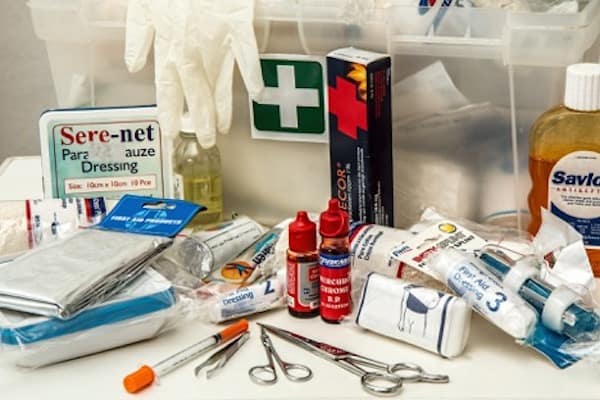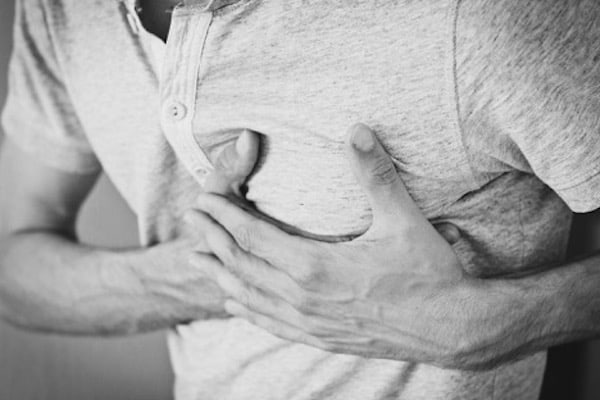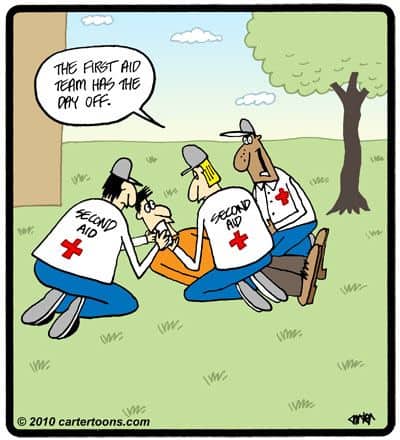First aid can save lives before paramedics or a traveling nurse arrives. There are some instances where an emergency requires the quick action of a bystander to save a life. You may already know cardiopulmonary resuscitation (CPR), which is probably among the first lifesavers people think of for people with no heartbeat or not breathing.
But there are other practical first-aid techniques that can also make a real difference to someone in a medical crisis. First, stay calm and always ensure your own safety, especially if you’re on a hazardous scene like a fire, natural disaster, or traffic accident. Be aware of your surroundings and prioritize your well-being. If the person is drunk or drug-affected, approach with caution.

Universal precautions to protect yourself also include personal protective equipment, such as powder-free vinyl gloves and eye protection – smart parts of a good first aid kit. When someone is injured, every second counts.
Assign a bystander to call 911 before you start your first aid. Then react quickly and confidentially if needed. Below are 10 easy-to-learn techniques everyone, even those with limited or no medical training, should learn.
1. Choking
The first thing to do when somebody’s choking on a piece of food is to “Give 5 and 5.” Get behind the person and give 5 blows to the person’s back with the heel of your hand. This could dislodge the food and clear the airway obstruction.
If that doesn’t work and choking continues, it’s time to try abdominal thrusts. Called the
“Heimlich Maneuver,” give 5 inward and upward abdominal thrusts by holding your hands between the naval and lower rib cage. Repeat the cycle of 5 back blows then 5 Heimlich thrusts until the person coughs out the object.
You can even give yourself the Heimlich Maneuver if you are choking and there isn’t anyone around by using a chair or counter to provide the thrusts instead of your hands. Choking can cause irreversible brain death in a little as 10 minutes so don’t delay in taking action.
2. Bleeding
If someone near you has been injured and is bleeding you will need to act quickly. Almost all external bleeding can be stopped by direct pressure and elevation. First, use a sterile pad or clean cloth and apply firm pressure to the wound until the bleeding stops. You can even purchase bandages that have a blood-clotting agent on them, a good first aid kit item to have.
Never remove any bandages to check on the wound as the bleeding could resume or get worse. Next, elevate the wound above the heart. Doing so will help reduce the chance of continued bleeding. Let first responders provide more advanced medical care if the bleeding does not stop.
3. Treat Low Blood Sugar
Diabetes is a medical condition that affects blood sugar levels. When blood sugar levels drop abnormally low, which can happen when diabetics miss a meal or exercise too much, a condition called hypoglycemia could occur. Severely low blood sugar levels could lead to a coma or could even be fatal.
Symptoms include extreme tiredness and loss of concentration, rapid onset of confusion, rapid pulse, shallow breathing, general weakness, and pale, clammy skin. While not every symptom may be present, the person needs emergency first aid. Always call for urgent help if the person is unresponsive.
You can help by aiding the person to sit on a chair or the floor if they feel faint. If they’re conscious, give them fruit juice, glucose, or a sweetened drink/food to raise their blood sugar levels – improvement can usually be seen within minutes. Ask whether they have a glucometer to test their blood glucose level.
4. Burns
Superficial burns such as scalds or sunburns are common. Run cool, tap water over the affected skin for at least 10 minutes – don’t use ice – then use a moist compress to cool the skin. Cover the burn loosely with sterile, non-adhesive material like gauze.
Don’t apply butter or ointments to a burn; those can cause infection. Don’t break blisters. Provide an over-the-counter pain medicine if needed (Advil, Motrin, Aleve, Tylenol, etc.). Severe burns – those that are deep or extensive (larger than three inches) – need emergency medical care ASAP.
5. Heart Attack

While there isn’t a lot you can do for a suspected heart attack be sure to keep 325 mg (adult) aspirin in your first aid kit. In a heart attack, blood cells and platelets form a clot that blocks blood flow, causing an unsafe lack of oxygen to the heart. In as little as 5 minutes, aspirin can prevent this clot formation.
If you think someone is having a heart attack, call emergency responders first. If the person isn’t allergic to aspirin or hasn’t been told to avoid it, let the responders guide you as to whether aspirin could help. If so, have the person chew the pill since chewing helps the body absorb the pill more quickly than swallowing the pill whole.
6. Seizures
It’s important to keep the person safe until the seizure stops on its own. Clear the area of hazards, loosen anything around the person’s neck, and gently roll them onto their side. Use a blanket or folded clothes to cushion and protect their heads from injury and remove their eyeglasses.
Don’t put anything in their mouth, grab their hand, or restrain the person in any way. Look for a medical alert ID on a bracelet or necklace to see if they are epileptic or have any seizure disorder identifiers. Time the seizure. Call an ambulance if the seizure lasts more than 5 minutes or if the person remains unresponsive for more than 5 minutes after the seizure stops.
7. Sprain
If someone rolls an ankle or twists a knee, just remember to follow the tried-and-true RICE method – it’s super simple support for minor strains or sprains, and everyone can do it. Let’s break down the RICE:
- R = Rest. Support the injured limb in a comfortable position.
- I = Ice. Use an ice bag (or even frozen veggies!) to reduce pain and swelling.
- C = Compression. Wrap a sprained joint, like an ankle, knee, or elbow, with an elastic bandage to support the injured area and prevent swelling. Make sure the wrap feels comfortable and isn’t too tight so circulation isn’t cut off.
- E = Elevate. Help the person limit swelling and bruising – have them lay down and use pillows, blankets, or clothing to keep the injured part elevated.
8. Frostbite
A condition where prolonged exposure to cold weather can cause the tissue below the skin to freeze, frostbite commonly affects fingers, toes, feet, ears, or the nose-first. Move the victim into a warm area indoors as soon as possible. Remove any wet or frozen clothing. Wrap the person in blankets or place them in a tub of warm, not hot, water.
If the person is conscious and alert, give them hot liquids to drink, but not alcohol. Call for emergency help if the skin changes color or becomes hard, the skin stays numb, the person has severe pain as their skin thaws or if skin blisters appear.
9. Heat Exhaustion
When heat affects a person, confusion, a weak pulse rate, and rapid, shallow breathing can set in suddenly or over a period of time. Usually, it happens after working or playing in excessive heat, perspiring heavily, or being dehydrated. First, get the person out of the heat and into a cool, shaded, or air-conditioned area to rest.
Have the person lie down and elevate feet, apply a cool compress, and fan them. Give them plenty of water or other non-alcoholic beverages for rehydration. If possible have them take a cool bath, shower, or sponge bath. Seek emergency help if the symptoms get worse or last more than an hour, or if the person is nauseated or vomiting.
10. Shock
If you suspect a person is in shock, call for emergency responders first because untreated shock can lead to organ damage or even death. Try to control any external bleeding. If possible, have the person lie down and raise their feet. Keep the person still, at a normal temperature, and stay with them until help arrives. Don’t let the person eat or drink anything.

Conclusion:
These 10 techniques aren’t just “nice to know” – they could potentially save a life. Always remember to call emergency and summon professional help whenever needed – and don’t panic. A professional on the line can best guide you through how to provide lifesaving care to a victim of an injury, illness, or other emergencies.
